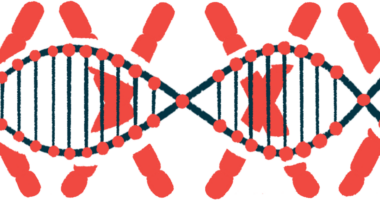Translarna Beneficial for Patients in Transitional Stage of Nonsense Mutation Duchenne MD, Study Finds
by |

The latest results of the Phase 3 clinical trial for PTC Therapeutics’ candidate Translarna (ataluren) for the treatment of nonsense mutation Duchenne muscular dystrophy (nmDMD) showed that it can benefit patients who are in a transition stage of the disease and are able to walk between 300 and 400 meters in six minutes.
The results were featured in a study titled, “Ataluren in patients with nonsense mutation Duchenne muscular dystrophy (ACT DMD): a multicentre, randomised, double-blind, placebo-controlled, phase 3 trial,” published in the journal The Lancet.
“There is a critical need for disease-modifying therapies for this devastating fatal disorder,” Craig M. McDonald, MD, lead author and investigator of the ACT DMD trial and chair of the Department of Physical Medicine and Rehabilitation at the University of California Davis School of Medicine, stated in a press release.
“The data in the publication show that ataluren provides benefit for nonsense mutation Duchenne patients who were in the functional range where a treatment benefit can be seen in a one-year trial. The slowing or stabilizing of disease progression and motor function is a highly valuable effect of drug treatment which likely translates to longer-term benefits,” McDonald said.
Translarna is a protein restoration therapy designed to correct defective proteins driven by the presence of nonsense mutations in their encoding genes. This can help correct the underlying problem in the protein dystrophin that causes Duchenne muscular dystrophy.
The Phase 3 ACT DMD (NCT01826487) trial included 228 boys ages 7 to 16 with nmDMD in 53 clinical sites across 18 countries in North America, Europe, the Asia-Pacific region, and Latin America. The patients received Translarna three times daily orally or a placebo for over 48 weeks.
To determine the therapy’s effectiveness, researchers evaluated changes from the start of the trial for a six-minute walking test (6MWD), as well as other timed function tests, including the time to run or walk 10 meters and the time to ascend or descend four stairs.
Researchers did not observe significant differences in outcome between the groups treated with Translarna and with a placebo. A subgroup analysis based on baseline disease severity also showed no meaningful clinical differences between the two study arms of patients with baseline 6MWD below 300 meters or above 400 meters.
Despite these results, researchers observed that the subgroup of participants whose 6MWD results at baseline were 300 meters or more, but less than 400 meters, showed 6MWD improvement after 48 weeks of Translarna treatment by an average of 42.9 meters compared with the placebo-treated subgroup.
Translarna therapy in this subgroup also reduced by 46% the risk of loss of function, as determined by the loss of ability to perform 17 individual items from the North Star Ambulatory Assessment test.
These results highlight the potential therapeutic benefit of Translarna for patients in this specific subgroup (6MWD, 300-400 meters), but also provide important data to improve the design of future clinical trials.
Translarna is under conditional marketing approval by the European Commission for the treatment of nmDMD in patients older than 5. In the United States, Translarna’s new drug application (NDA) for nmDMD is under evaluation by the FDA.







